
Time taken : ~10mins
And why does the man standing in front of the musicians make such wild gestures? All these answered and more, plus two quizzes to test your knowledge.
An orchestra is a general term for when a group of musicians get together to play. There are many different types of orchestra such as a modern Western orchestra, a gamelan orchestra and even a Chinese orchestra.
Orchestras can vary in size. A chamber orchestra consists of a smaller number of musicians coming together to play.
A symphony orchestra, on the other hand, is what most people mean when they talk about a full-size modern Western orchestra. The number of musicians varies from one orchestra to another, but in a full-size orchestra, you can have about 60 or more musicians on stage, playing instruments from the four “families”.
Generally, the instruments can be grouped into one of the four:
Instruments are usually made of wood and strings and can be played by vibrating the strings with a bow or plucking or striking them with one’s finger. The latter is a technique known as pizzicato.
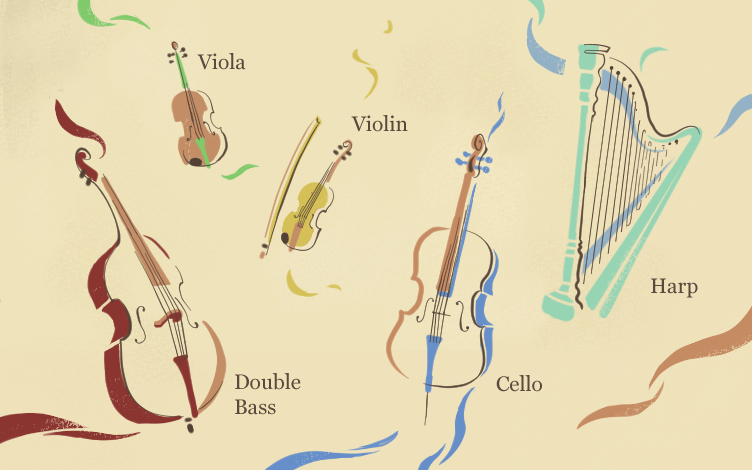
Examples of string instruments
Want to find out more about the violin? Let Eddy and Brett of the famed TwoSet Violin break down the ins and outs of this string instrument and its role in the orchestra.
These instruments are played by blowing air into a single or double reed, which is attached to a mouthpiece. A reed is a thin strip of material which produces sound in a musical instrument when it vibrates.
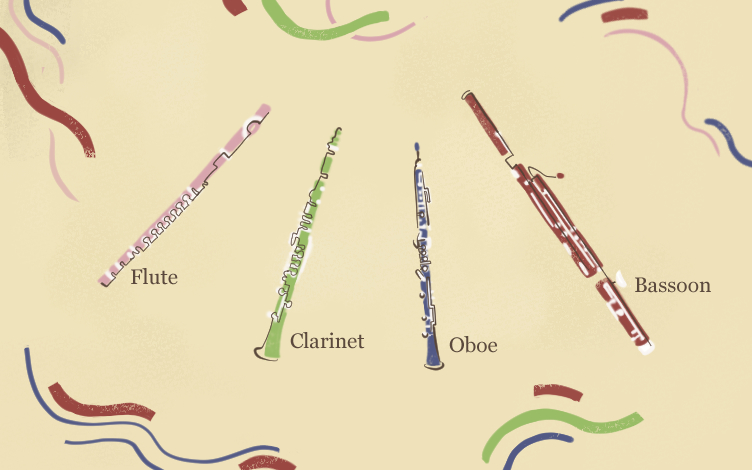
Examples of woodwind instruments
These instruments are usually made of brass or other metal alloy. Sound is created when the musician vibrates his or her lips against a mouthpiece. The mouthpiece is fitted inside the instrument.
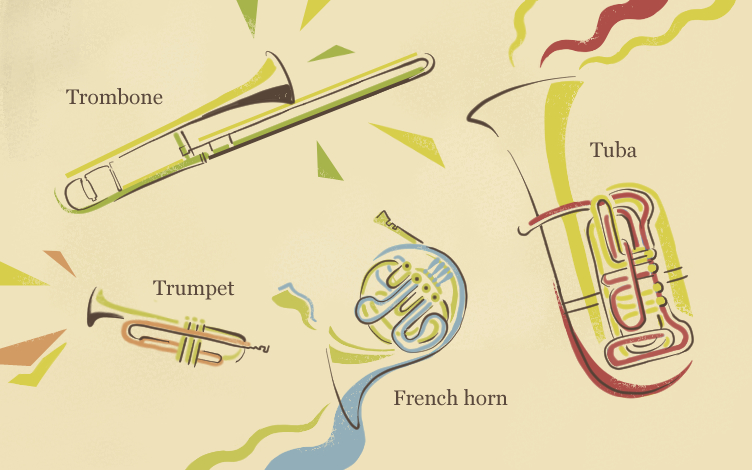
Examples of brass instruments
Sound is created when the instrument is struck, scraped or shaken. Percussion instruments keep the rhythm, add excitement and colour, and may even create special sound effects in an orchestra.
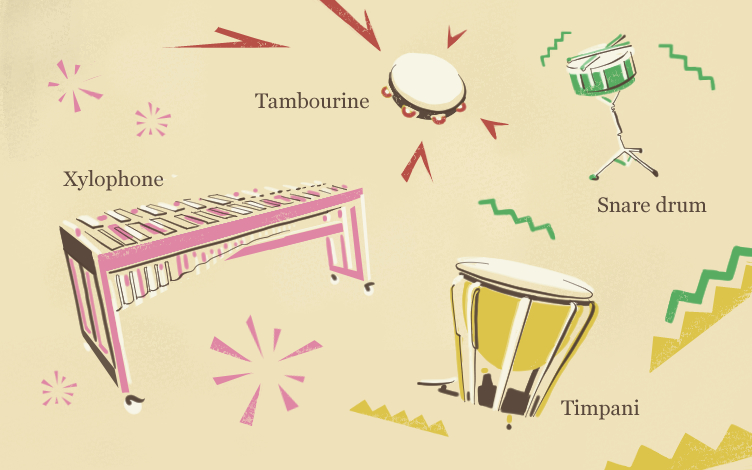
Examples of percussion instruments
If you observe a full-size orchestra during a music performance, the seating arrangement is broadly divided among the four families.
Generally, the quieter string instruments are in front and closer to the conductor and audience. The woodwind and brass instruments are usually seated behind the string instruments as they are capable of producing larger, louder sounds. The percussion instruments, the loudest family of instruments, are usually placed at the back. They are also bulkier and bigger.
However, this is just a general rule of thumb and depending on what the orchestra is playing, the arrangement of the orchestra and the variety of instruments might differ.
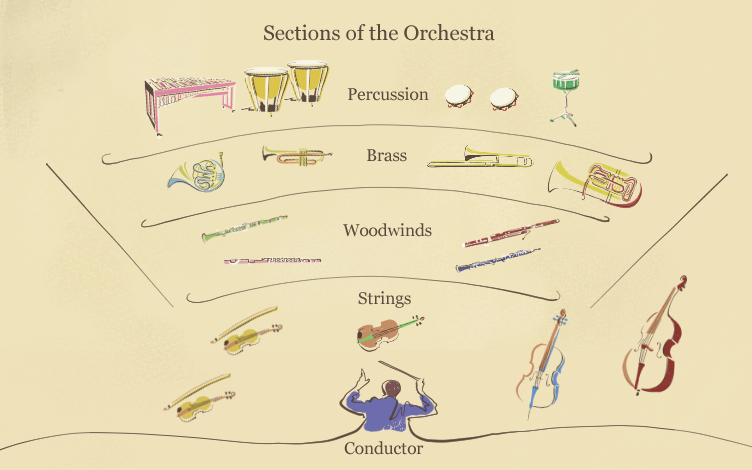
One type of seating arrangement that you might find in a symphony orchestra.
Listen to The Young Person's Guide to the Orchestra, a 1945 musical composition by Benjamin Britten and take the quiz.
It’s the conductor whose main role is to translate the composer’s work and convey its essence and dynamics to the musicians.
How fast or slow, how loud or soft, who plays which part, when to start and when to stop — these are just some of the things the conductor has to be in control of. Those seemingly wild gestures conductors make are not random. They are part of a language that the conductor uses to communicate with the musicians on stage. However, not all orchestras require a conductor. A smaller chamber orchestra usually does not have one.
Just before the conductor steps onto the stage to begin a concert, a lone violinist enters, raises his or her bow and the orchestra goes silent. Who is this person? Why does he or she have so much power?
This person is the concertmaster or leader and most times, it is the violinist that sits closest to the conductor. It is a great honour to be a concertmaster. It is the concertmaster’s job to prepare the orchestra before the conductor walks on stage.
After silence falls, the concertmaster signals for the oboe to play a tuning note (the ‘A’ note). The rest of the musicians follow suit and play the same note. Everyone in the orchestra has to make sure that their instruments are in tune with one another. And once the orchestra is ready, the conductor walks in and shakes the hand of the concertmaster. Well done!
Sometimes, while a round of applause or a cheer may seem like a natural reaction after the orchestra comes to a stop, the concert hall is silent. Nobody is clapping! Why?
That is because the audience knows that the piece isn’t over yet — only one movement (section) has ended and so they wait. In between movements, the orchestra takes the opportunity to tune up their instruments and they need to hear themselves.
Sometimes too, the silence in music are rests and not the end of the movement, and clapping will ruin these moments.
While it may be tough for a beginner to judge when it is okay to clap, don’t let that stop you from enjoying the music. If you're unsure whether a piece is finished, just watch the conductor and follow the crowd. When the conductor puts his hands down and turns towards the audience, that is a sign that the piece is over. When most of the crowd starts clapping, you can clap too. However, even if you do make a mistake, it is alright! You will get the hang of it the more you listen and watch.
An easy, breezy introduction into different art forms and genres before dipping your toes into the arts.